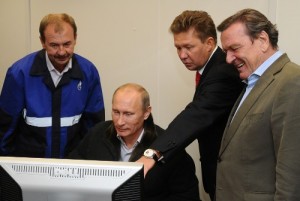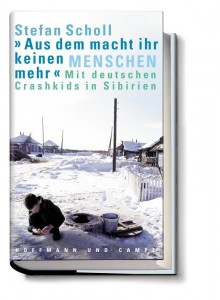Nord Stream go-ahead
13 Feb 2010 Finnish environmental officials have given the final permission. The Nord Stream, a German-Russian joint venture, is to begin building the pipeline later this year.
Finnish environmental officials have given the final permission. The Nord Stream, a German-Russian joint venture, is to begin building the pipeline later this year.
“In May 2011 the construction is to be completed on the sea section and on land in Germany and Russia,” Russian prime minister Vladimir Putin said. “And gas will start to be pumped in September (2011).”
Following the approval by Danish, German, Russian and Swedish authorities, Finland was the last country in the region to grant permit. About 375 kilometers of the pipeline will run through Finland’s exclusive economic zone in the Gulf of Finland.
The Nord Stream project involves building a 1,223-kilometer pipeline to deliver gas to western Europe from Russia, bypassing Eastern Europe. When finished, it will cross the Baltic sea and will connect the Russian port of Vyborg with the German port of Greifswald.
The first branch of the pipeline with a capacity to ship 27.5 billion cubic meters a year will become operational in two years. The addition of a second branch will double capacity to 55 billion m³ a year. The overall cost of the project is put at about 7.4bn euros.
Russia’s Gazprom has a 51% stake in the Nord Stream AG joint venture. BASF/Wintershall and E.ON Ruhrgas each have 20% stakes and N.V. Nederlandse Gasunie has 9%.
Critics
This pipeline, that in the past was called by some Polish politicians “the new Molotov-Ribbentrop pact”, becomes the first transit option for Russian gas for European customers that avoids networks in Ukraine. A 2009 dispute between Kiev and Moscow forced Gazprom to cut supplies for weeks. Polish Foreign Minister Radosław Sikorski said that this project is only “a waste of European consumers’ money”. The Polish authorities have pointed out several times that the Russo-German consortium has not been able to explain why a sea route is better than the cheaper land option. Warsaw and other ex-communist Baltic Sea states such as Estonia and Lithuania have warned that the pipeline will increase Europe’s direct dependence on Russia for natural gas
History and reasons
The senior project, Nord Stream, emerged in 1997 as a projected route for the direct transportation of gas from Russia to Northern Germany and Western Europe via the Baltic Sea. The new pipeline was intended not only to diversify the export routes for Russian gas in case of problems with the transit states, but also to pave the way for Gazprom to enter new markets in Europe.
Gas extraction in the North Sea is decreasing, and the current producers and net exporters of this raw material, Denmark, Holland and Great Britain, are gradually turning into importers. The reduced version of the Nord Stream project (an idea to build a branch to Great Britain was abandoned) will be build now.
One of Moscow’s reasons for constructing new routes, as we said before, is that in the current system of gas transportation to Europe, transit via Ukraine, Belarus and Poland is perceived as a risk factor. However, the projected new routes cannot solve the problem of Gazprom’s transit dependence, as they cannot fully replace the Ukrainian route.
The second branch of Nord Stream (the gas for the first branch has now almost fully entered into contracts) could transport the gas now sent by the Yamal-Europe pipeline via Belarus and Poland (about 31 billion m³). Theoretically, some portion of the gas now sent via Ukraine could be redirected to Nord Stream’s second branch, but this would require constructing new branches and connectives between the gas mains on Russian territory.
Environmental worries
The Regional State Administrative Agency for Southern Finland says that while the construction of the pipeline is expected to release substances like dioxins, metals and nutrients from the seabed they would not cause long-term damage to marine habitats.
The agency added that construction would impose temporary limitations on marine traffic, with a long-term impact on fishery. The Nord Stream consortium is to pay compensation to the fishing industry. The risk of damage to the pipeline is low.
More than 100m euros have been spent on environmental research. “I believe that Nord Stream will be environmentally safe and reliable”, guaranteed Vladimir Putin.
Some Baltic countries fear the project could stir up toxins lying on the sea bed, especially those inside a vast number of WWII-era armaments. “It’s serious. We are worried about the dioxins and other poisons on the seabed,” Estonian Prime Minister Andrus Ansip said. “We expect our scientists to get full information about it all.”
There are also other worries. According to a report on Swedish television, Russian boats dumped barrels of radioactive material, from a military base in Latvia, into Swedish waters in the early 1990s.
The Baltic is one of the most polluted area in the world and is in danger of becoming a dead sea. In 2007 the countries of the region set the goal of restoring the environmental situation by 2021.
Giuseppe D’Amato
Comment Form
Welcome
We are a group of long experienced European journalists and intellectuals interested in international politics and culture. We would like to exchange our opinion on new Europe and Russia.
Categories
- Breaking News (11)
- CIS (129)
- Climate (2)
- Energy&Economy (115)
- EU Eastern Dimension (85)
- Euro 2012 – Sochi 2014 – World Cup 2018, Sport (43)
- Euro-Integration (135)
- History Culture (198)
- International Policy (261)
- Military (74)
- Interviews (18)
- Italy – Italia – Suisse (47)
- Odd Enough (10)
- Poland and Baltic States (126)
- Religion (31)
- Russia (421)
- Survey (4)
- Turning points (4)
- Ukraine (176)
- Российские страницы (113)
Archives
- November 2020
- October 2020
- September 2020
- August 2020
- July 2020
- May 2020
- April 2020
- March 2020
- January 2020
- December 2019
- November 2019
- October 2019
- September 2019
- August 2019
- July 2019
- June 2019
- May 2019
- April 2019
- March 2019
- February 2019
- December 2018
- November 2018
- October 2018
- September 2018
- August 2018
- July 2018
- June 2018
- May 2018
- April 2018
- March 2018
- February 2018
- January 2018
- December 2017
- November 2017
- October 2017
- September 2017
- August 2017
- July 2017
- May 2017
- March 2017
- January 2017
- December 2016
- November 2016
- October 2016
- September 2016
- July 2016
- June 2016
- May 2016
- April 2016
- February 2016
- January 2016
- November 2015
- October 2015
- September 2015
- June 2015
- April 2015
- March 2015
- February 2015
- January 2015
- December 2014
- November 2014
- October 2014
- September 2014
- August 2014
- July 2014
- June 2014
- May 2014
- April 2014
- March 2014
- February 2014
- January 2014
- December 2013
- November 2013
- October 2013
- September 2013
- August 2013
- July 2013
- June 2013
- May 2013
- April 2013
- March 2013
- February 2013
- January 2013
- December 2012
- November 2012
- October 2012
- September 2012
- August 2012
- July 2012
- June 2012
- May 2012
- April 2012
- March 2012
- February 2012
- January 2012
- December 2011
- November 2011
- October 2011
- September 2011
- August 2011
- July 2011
- June 2011
- May 2011
- April 2011
- March 2011
- February 2011
- January 2011
- December 2010
- November 2010
- October 2010
- September 2010
- August 2010
- July 2010
- June 2010
- May 2010
- April 2010
- March 2010
- February 2010
- January 2010
- December 2009
- November 2009
- October 2009
- September 2009
- August 2009
Our books




